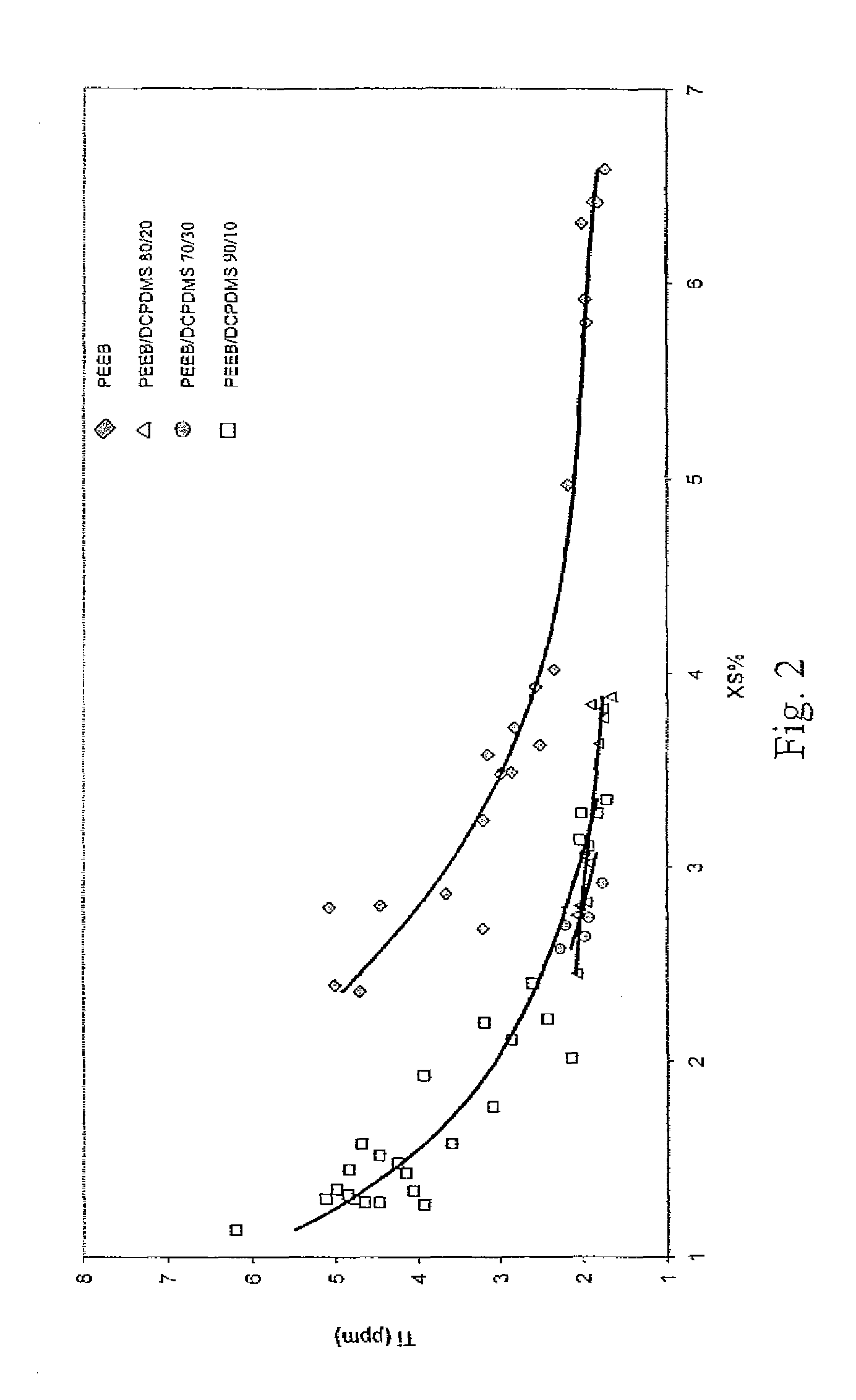Catalyst composition with monocarboxylic acid ester internal donor and propylene polymerization process
a monocarboxylic acid ester and catalyst composition technology, applied in the direction of catalytic reaction, catalytic reaction activation/preparation, chemical/physical processes, etc., can solve the problem of sacrificing the control of reaction conditions, sca that is effective in combination with one procatalyst may not be effective when used in combination with a different procatalyst, and inferior catalyst compositions possessing lower overall polymerization activity. , to achieve the effect o
- Summary
- Abstract
- Description
- Claims
- Application Information
AI Technical Summary
Benefits of technology
Problems solved by technology
Method used
Image
Examples
example 1
[0068]A titanium containing Ziegler-Natta catalyst composition is employed to produce polypropylene homopolymers. The catalyst composition includes a controlled morphology procatalyst prepared by slurrying a mixture of a magnesium diethoxide and titanium ethoxide / chloride containing precursor corresponding to the formula Mg3Ti(OC2H5)8Cl2 (made substantially according to U.S. Pat. No. 5,077,357) with ethyl benzoate (0.10 ml / gram precursor) in a 50 / 50 (vol / vol) mixture of TiCl4 / monochlorobenzene (MCB, 15.9 ml / gram precursor). After the mixture is heated at 70° C. for 30 minutes, it is filtered. The resulting moist mass is slurried in a 50 / 50 TiCl4 / MCB mixture (15.9 ml / gram precursor) and benzoyl chloride (0.056 ml / gram precursor) at 99° C. for 10 minutes and filtered. The last process was repeated once with 0.10 ml / gram precursor at 95° C. for 10 minutes. The resulting solid is rinsed with isopentane and then dried with flowing warm nitrogen.
[0069]Propylene polymerizations are carried...
example 2
[0073]A continuous, gas phase, fluidized bed polymerization is employed to polymerize propylene under selected reaction conditions employing the procatalyst of Example 1, triethylaluminum cocatalyst, and various SCA compositions, PEEB, DCPDMS / PEEB and DChDMS / PEEB. The resulting polymers are tested for Ti content (indicative of catalyst productivity) and XS. Plots of the results are contained in FIGS. 1 and 2. The results indicate that polymers having both low Ti content and low XS are capable of preparation utilizing the mixed SCA's of the invention.
example 3
[0074]Bed settling tests were conducted using the fluidized bed reactor of Example 2 in order to approximate conditions of a power outage. In the tests, the compressor is stopped after the reactor reaches steady state propylene polymerization conditions thereby allowing the bed particles to settle onto the distributor plate. The maximum temperature indicated by the bed thermocouple is then recorded. For polypropylene, a maximum bed temperature less than 145° C. is desired to prevent sticking of polymer particles. For propylene / ethylene copolymers maximum bed temperatures should be lower, preferably not exceeding 106° C. Results are contained in Table 2.
[0075]
TABLE 2RunSCA (mol ratio)Maximum Temp. (° C.)17 DCPDMS / PEEB (10 / 90)10618 MChDMS / PEEB (20 / 80)9819*NPTMS / PEEB (25 / 75)13620*PEEB92*Comparative, not an example of the invention
PUM
| Property | Measurement | Unit |
|---|---|---|
| molar ratio | aaaaa | aaaaa |
| temperature | aaaaa | aaaaa |
| temperature | aaaaa | aaaaa |
Abstract
Description
Claims
Application Information
 Login to View More
Login to View More - R&D
- Intellectual Property
- Life Sciences
- Materials
- Tech Scout
- Unparalleled Data Quality
- Higher Quality Content
- 60% Fewer Hallucinations
Browse by: Latest US Patents, China's latest patents, Technical Efficacy Thesaurus, Application Domain, Technology Topic, Popular Technical Reports.
© 2025 PatSnap. All rights reserved.Legal|Privacy policy|Modern Slavery Act Transparency Statement|Sitemap|About US| Contact US: help@patsnap.com


